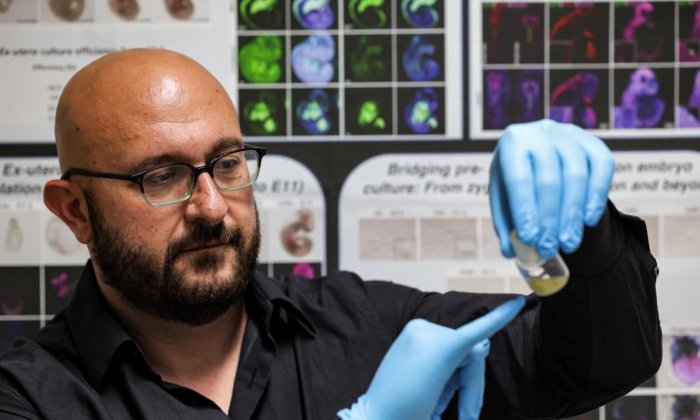Artificial Human Embryos Generated by Israeli Scientists, Unconventionally Excluding Sperm or Eggs
Researchers from Israel’s Weizmann Institute of Science have created complete human “embryo models” without using sperm or eggs, growing them outside of the womb for 14 days.
After extraction, the skin cell was subjected to certain biological and chemical processes that transformed it back into a stem cell, which then developed outside the womb until it hit the stage of a human embryo at 14 days.
The research is crucial since very little is known about the early stages of an embryo as they are difficult to study.
“The drama is in the first month, the remaining eight months of pregnancy are mainly lots of growth,” said Professor Jacob Hanna.
“But that first month is still largely a black box. Our stem cell-derived human embryo model offers an ethical and accessible way of peering into this box. It closely mimics the development of a real human embryo, particularly the emergence of its exquisitely fine architecture.”
Mr. Hanna pointed out that several failures of pregnancy occur in the first few weeks. And most of the time, affected women may not even be aware that they are pregnant.
It is during these first weeks that many of the birth defects develop, some of which may only be discovered at a much later date.
“Our models can be used to reveal the biochemical and mechanical signals that ensure proper development at this early stage, and the ways in which that development can go wrong,” he said.
Weizmann’s human embryo models can shed light on the causes of several birth defects and types of infertility as well as lead to the development of technologies to grow organs and tissues for transplant, the institute claimed.
It also opens up paths to conduct research that would be impossible on natural embryos, it said. For instance, the embryo models can be used to determine the effects of exposure to drugs or other substances on the development of the fetus.
Legal and Moral Issues
The embryo models grew outside of the womb for eight days, reaching a developmental stage that is equivalent to 14 days of natural human embryonic development after fertilization. This is the point at which natural embryos get the internal structures necessary to eventually evolve into body organs.
Fourteen days is also the legal cut-off date for embryonic research in many countries. Weizmann Institute’s work also raises the question of whether embryo development can be mimicked after the 14-day limit.
 Source link
Source link
- Sen. Ernst Commends McConnell’s Strong Leadership and Successful Senate GOP Fundraising, Tells Newsmax
- Huckabee Urges Newsmax: Implement Term Limits






